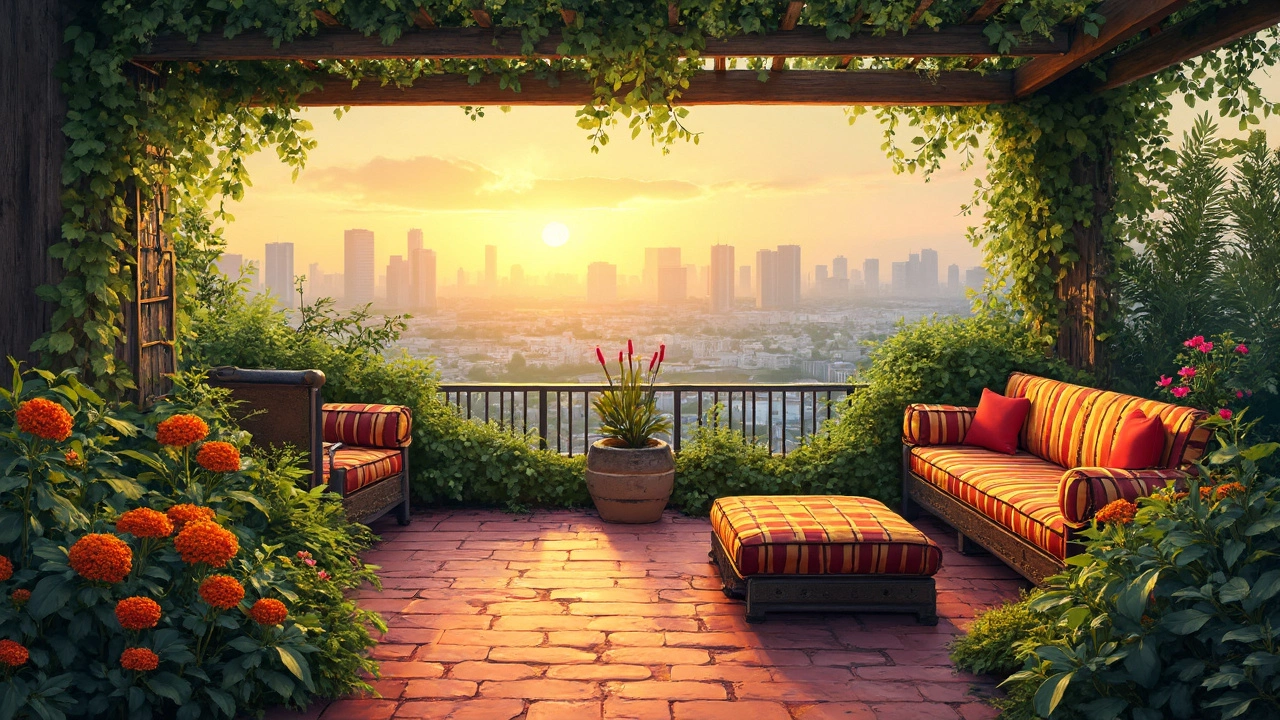Discover the distinctions between balconies and terraces and how these differences impact your outdoor gardening options. From size and structure to the types of plants you can grow, each space offers unique opportunities for creating a lush garden retreat. Learn practical tips to make the most of your balcony or terrace, no matter its size. Whether you have a quaint balcony or a spacious terrace, there's potential to create a green oasis that suits your lifestyle.
Balcony Gardening in India: Best Plants, Tips, and Common Mistakes
When you think of balcony, a small outdoor space attached to a home, often used for growing plants in urban settings. Also known as terrace garden, it's one of the most practical ways to grow food and flowers in Indian cities where land is tight. A balcony isn’t just extra space—it’s your personal farm, herb patch, or flower display. But not every balcony works the same. In India, where temperatures swing from 45°C in summer to chilly winters in the north, getting your balcony right means understanding sunlight, wind, and container limits.
What makes a balcony garden succeed? It’s not about how big it is—it’s about matching plants to conditions. A south-facing balcony gets the most sun all day, perfect for tomatoes, chillies, and basil. A north-facing one? Stick with shade lovers like mint or ferns. Many people fail because they put sun-loving plants in shadow, or use tiny pots that dry out in hours. The right container gardening, growing plants in pots or raised beds instead of open ground means choosing the right size, material, and drainage. Clay pots breathe but dry fast. Plastic holds moisture but can overheat. And don’t forget the soil—dense garden soil won’t cut it. You need light, airy mixes with compost and perlite, especially if you’re in a city where good dirt is hard to find.
Then there’s the balcony plants, plants specifically suited to grow in limited space with controlled light and wind exposure. In India, you don’t need exotic imports. Year-round bloomers like marigolds, hibiscus, and jasmine thrive with minimal care. Herbs like coriander and curry leaf grow fast and feed your kitchen. Even small fruits like strawberries and dwarf citrus work in big enough pots. But avoid the trap of overplanting. Crowded balconies mean poor air flow, which invites pests and rot. Keep it simple. Pick three to five plants that suit your light, water them right, and watch them grow.
People often think balconies are only for flowers. But the best ones are edible. Think of your balcony as a mini-farm—where you can grow your own curry ingredients, salad greens, or even a few chillies for your dal. It’s not about perfection. It’s about consistency. Watering once a day, checking for pests weekly, and giving plants room to breathe—that’s what turns a balcony into a living space.
Below, you’ll find real advice from gardeners who’ve tried it all. From avoiding the one spot that kills hydrangeas, to picking the easiest herb for beginners, to choosing the best direction for your pots—you’ll find exactly what works in Indian conditions. No fluff. No theory. Just what you need to make your balcony bloom.
